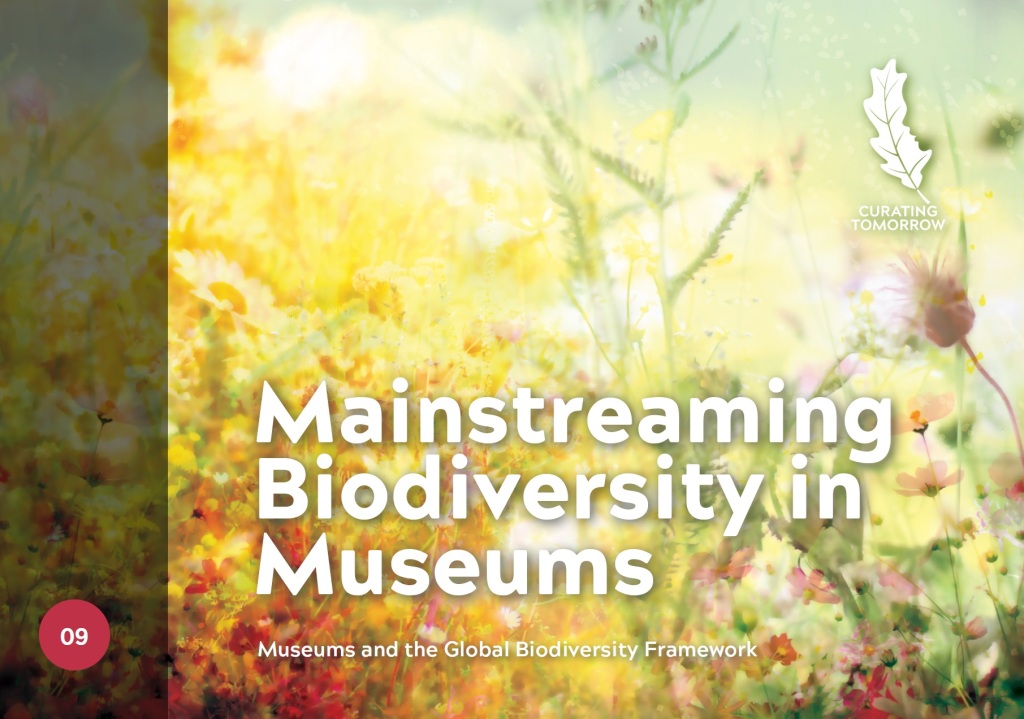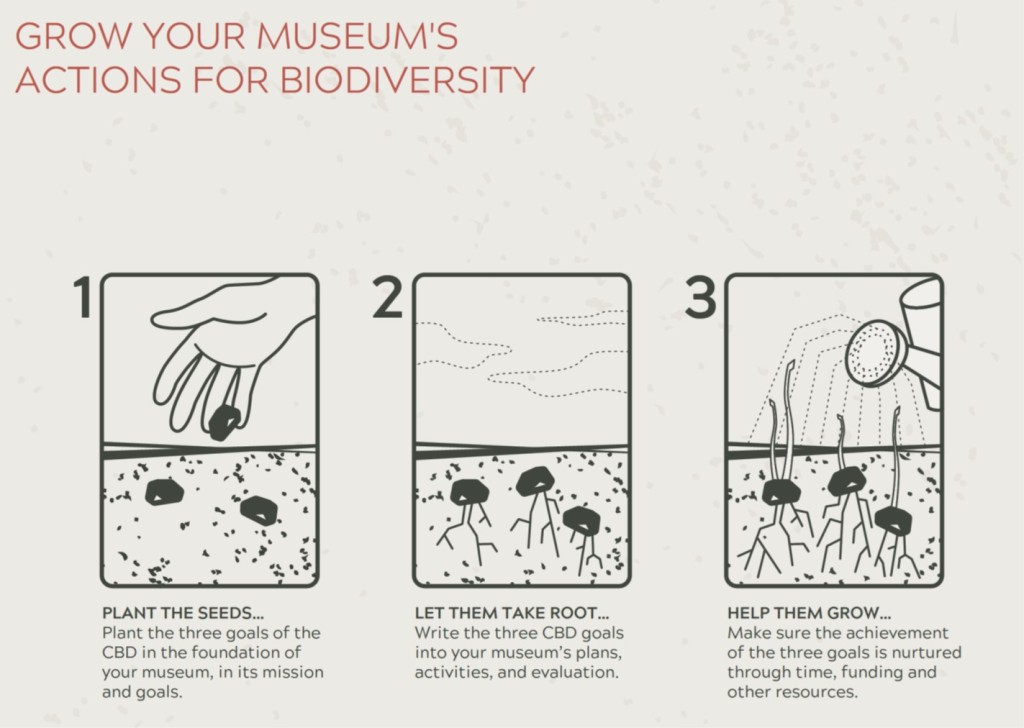Written by Henry McGhie, Curating Tomorrow henrymcghie@curatingtomorrow.co.uk.

Link to the guide: https://curatingtomorrow236646048.files.wordpress.com/2023/11/mainstreaming-biodiversity-in-museums_2023.pdf
‘Mainstreaming’ is a policy and planning approach that means that we don’t just create a new programme or strand of work, but that we embed it across all activities. We can embed support for biodiversity and environmental concerns across museum activities. Why is this important? Well, for a few reasons. Firstly, biodiversity is not yet fully mainstreamed into museum thinking – in terms of their goals, actions, or evaluation. Second, museums present a massive potential to support biodiversity in different ways, notably through education, research, public awareness and partnerships. Third, museums make big negative impacts on biodiversity and the environment, through their contributions to climate change (from use of energy, waste, and visitor emissions), and their involvement in environmentally damaging activities (e.g. how their investments are used). Fourth, because biodiversity is in deep crisis: species continue to decline, major challenges are getting worse, and there is no clear prospect of a change for the better. Lastly, fifth, because people and nature are interdependent: if the environment suffers, people and communities suffer.
While it might seem obvious that museums should support biodiversity, in practice this has not been the case, at least in terms of how they have connected with the Convention on Biological Diversity – the main international agreement for conserving biodiversity. The Convention is now over thirty years old, yet its goals and action programmes are hardly known in museums. The Convention was one of the main outcomes of the Rio Earth Summit, which aimed to put society on a better track in terms of use of nature, and which also formally recognized that people have the legal right to access to information on the environment, to take part in environmental decision making, and to seek environmental justice. The lack of awareness or uptake of the CBD is a problem, as the many good initiatives to support the CBD are not being made use of by museums, and people are denied opportunities to take part in them.
The Convention has three main goals: the conservation and restoration of biodiversity, promoting sustainable use of nature, and sharing the benefits of the use of nature fairly. The last of these is the most specific, relating to Access and Benefit-sharing (especially of genetic resources, but also of associated traditional knowledge), and obviously related to the work of museums and other collecting institutions. In practice rather few museums have Access and Benefit-sharing policies or agreements in place. The first of the three goals is perhaps the most obvious, that species and habitats should be conserved and managed effectively. The second goal is arguably the most under-used, in terms of promoting traditional lifestyles and local knowledge and use of nature.
The Convention itself is fairly high-level, but it is supported by a practical action programme, called the Global Biodiversity Framework (or, informally, the Biodiversity Plan). This can be used as a practical tool by museums. Last year, I wrote an open-access guide to help connect museum work with the Global Biodiversity Framework, part-funded by the British Ecological Society. The guide aims to help you to:
1. Adopt the three goals of the Convention on Biological Diversity to inform all their activities. The three goals could be easily written into the policies, workplans, programmes and partnerships of museums.
2. To make concrete contributions to biodiversity by using the new Global Biodiversity Framework, as the main current programme to support the CBD, to mainstream biodiversity into their various activities.
3. Adopt good practices, in terms of using recognized principles and frameworks, to avoid reinventing the wheel, or using less effective methods.
These considerations can be factored into what you collect, the educational and awareness-raising programmes you provide, the opportunities you create for people to be involved in environmental decision-making, the kind of tourism you’re involved in, research activities, operations and management, and your partnerships.
Connecting with the CBD and the Global Biodiversity Framework can bring many benefits – to people, to nature and museums. Let’s do it!





